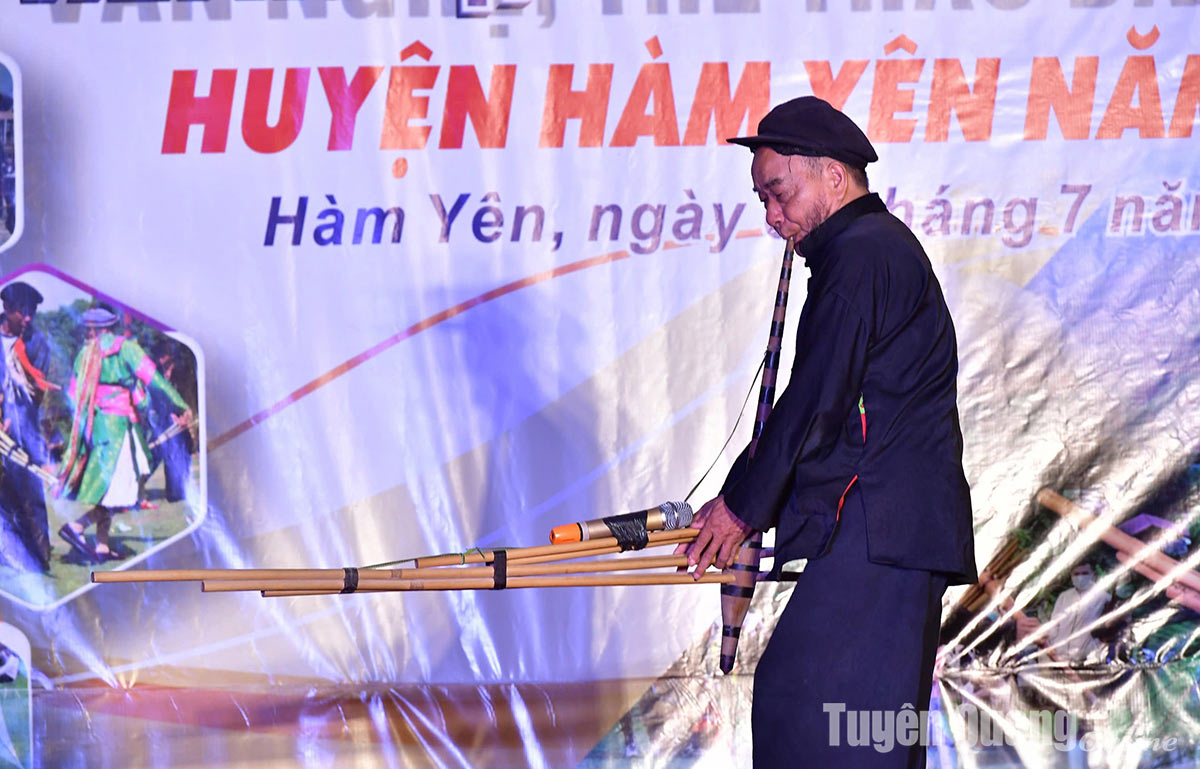
A performance of the H'mong panpipe at the 2024 Mong ethnic arts and sports festival in Ham Yen district.
The panpipe is present in almost all aspects of the daily life, culture and spirituality of the H'mong people. The H'mong people in the communes of Tuyen Quang such as Xuan Lap, Binh An (Lam Binh), Kien Thiet, Hung Loi (Yen Son), Tan An (Son Duong), Yen Thuan, and Yen Lam (Ham Yen) have still preserved the panpipe as a symbol in their cultural life through generations.
Each panpine has six bamboo tubes of different lengths and widths, arranged closely together with one end connected to a gourd. The brass bar (the reed) is the only part made of metal.
Panpine gourds are usually made of pine wood, kimgiao (Nageiafleuryi) and po mu (Chamaecyparishodginsii).
There are no common standards for panpine making which, however, requires ingenuity, patience and experience.
At festivals, the melodies of panpipes echo over mountains and forests, expressing wishes of the H'mong people in Tuyen Quang.

Comment
Print